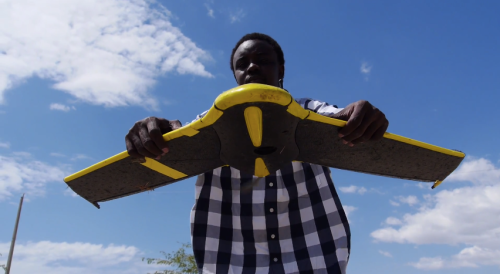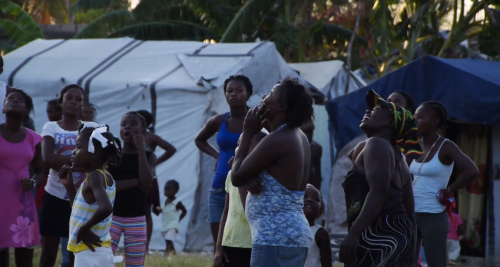Cross-posted from iRevolution.net.
"What if, to solve our problems, we simply need to rise above them?"
CartONG and France's OpenStreetMap (OSM) community recently teamed up to support OSM Haiti's disaster risk reduction efforts by deploying a small UAV, "which proved very useful for participatory mapping." This video documentary provides an excellent summary of this humanitarian UAV mission which took place just a few weeks ago.
As I noted in this earlier blog post on grassroots UAVs, the use of UAVs at the community level can be viewed as an extension of community and participatory mapping, which is why community engagement is pivotal for humanitarian UAV deployments. In many ways, a micro-UAV can actually bring a community together; can catalyze conversations & participation, which should be taken as more than simply a positive externality. Public Participatory GIS Projects (PPGIS) have long been used as a means to catalyze community conversations and even conflict resolution and mediation. So one should not overlook the positive uses of UAVs as a way to convene a community. Indeed, as CartONG and partners rightly note in the above video documentary, "The UAV is the uniting tool that brings the community together."
This joint UAV project in Haiti has three phases: training for data collection; analysis and use of collected data; and empowering the Haitian OSM community to lead their own projects with their own partners. The first phase, which was just completed, comprised 42 individual UAV flights (using SenseFly's eBee) in multiple locations including the Port-au-Prince area, the urbanized part of Saint-Marc, Sans-Souci Palace (Unesco World Heritage Site), Dominican Republic border areas and Bord de Mer. This enabled the Haitian OSM community to test the UAV under varying conditions and across different terrains.
The UAV flight training included "aerial security" and an overview of the UAV's weaknesses. As CartONG rightly notes, the use of UAVs for data collection and the training that goes along with "strengthen Haitian OSM communities, so that they can fully take part in local development."
To this end, I'm hoping to see more women flying UAVs in the future rather than seeing them standing by as passive observers. Community engagement without women is not community engagement. Perhaps UAVs can play a role in uniting and enabling women to become more engaged and take on leadership roles within communities.
As part of their initial phase, CartONG and team also set up a mini-server to facilitate the processing of UAV imagery on site. "Considering the difficulties faced regarding aerial image processing the need for such a tool has been confirmed for all situations where accessing internet & electricity is a challenge." Moreover, the Haitian OSM community expressed a direct interest in not only piloting UAVs but also in the processing and analysis of the resulting data: "communities wish to be trained to be able to fully master the process of collection and processing of aerial image, including on software such as ArcGIS and QGIS."
I'm excited about these efforts and keen to follow the next phases of this UAV community mapping project. In the meantime, big thanks to CartONG's Martin Noblecourt for kindly sharing this important volunteer-driven project. If you want to learn more about this initiative, feel free to contact Martin via email at info@cartong.org.
See Also:




Comments